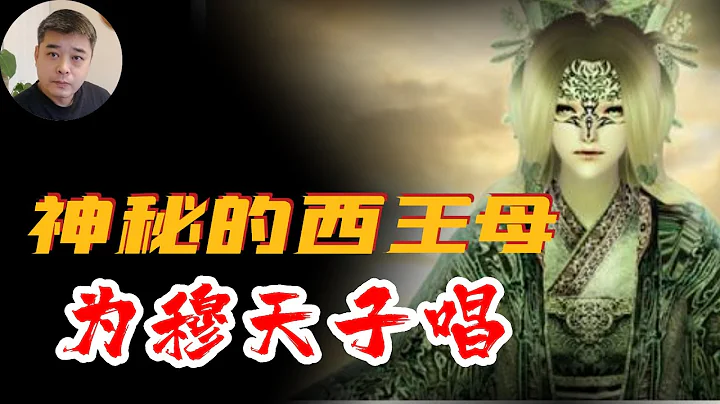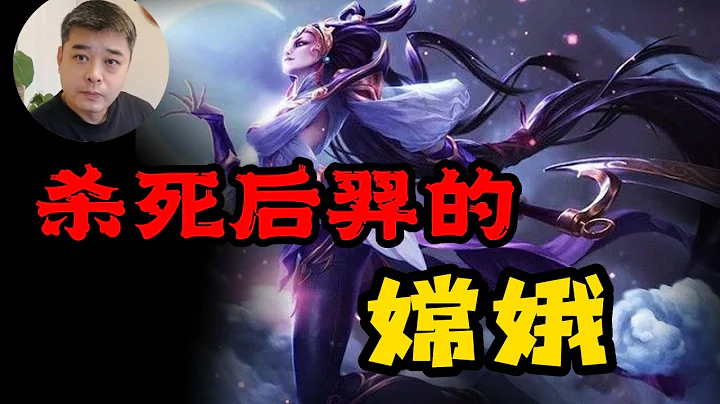Last time we talked about the four world-class sacred trees that appeared in Chinese mythology. They are recorded in the Shanhaijing: Jianmu, Xunmu, Fusang and Ruomu. Therefore, the tree of the world should also be a kind of myth that prevails all over the world. But unfortunately, the legend about these four trees is too ancient, and the remaining written records are only a few lines. There is no picture material of these trees in the Shanhaijing, so I can only paint the material for this video. Except for knowing that these four trees meet the mythical characteristics of the tree of the world, we have no way of knowing more details. Do we really have to rely on our own brains to make up?

Eight bronze sacred trees were unearthed at the Sanxingdui site in Guanghan, Sichuan in 1986. Their shapes are the same as those of hibiscus, ruoshu, and Jianmu recorded in the Shanhaijing. Very similar. Among them, the No. 1 sacred tree is 3.96 meters high, with three layers of upper, middle and lower, with three branches on each layer, and a bird standing on each branch, a total of nine. There is a dragon at the root of the tree, head down and tail up, with wings.

Except for this dragon, other characteristics are quite in line with the records in the Shanhaijing. In the "Shanhaijing·Overseas Eastern Jing", it is written: "There are hibiscus on the valley. , The bath for ten days, in the north of Heifang. In the inhabiting water, there are big woods, the branches of the nine days of residence, and the branches of the first day."

In the "Mountain and Sea Jing. He also wrote: In the Great Wilderness, there is a mountain with the name Nie Yaowei. There are pillars on it, three hundred li, and its leaves are like mustard. There is a valley called Wenyuan Valley. There are buttresses on the soup valley.

These inscriptions mean that there are ten sun god birds living on the hibiscus tree. One of them flew back and the other flew out. This fits the bronze god tree There are nine birds inhabited. In the legend, there are two such trees, the hibiscus tree on the sea in the extreme east, and the Wakamu tree in the extreme west. The sun bird rises from the hibiscus tree in the morning and flies from east to west, and inhabits at night. On the tree of Wakamura. Wait, two trees? Are there nine birds living separately? Then there are not nine in each tree? Forget it, regardless of this, anyway, scholars believe that this bronze sacred tree is related to the hibiscus tree and Wakamu, so the nine sacred birds on the tree may symbolize the sun.

In addition, some experts have suggested that this bronze tree is also related to the legendary Jianmu, because Jianmu is described as a tree that connects heaven and earth in the Classic of Mountains and Seas. The huge trees are the passages for gods and wizards to travel between heaven and earth. The bronze sacred tree is divided into three levels, the upper, middle and lower levels, which symbolize the three realms. And the nine birds on the tree may not be a symbol of the sun, but a messenger responsible for communicating with all walks of life. This explanation is very similar to the shamanism.

Actually the bronze sacred tree in Sanxingdui has many similarities with the artistic expression of shamanism. Almost in the shamanism of the world, the universe is usually divided into upper middle The lower three levels, the upper level is the kingdom of the gods, the lower level is the world of the dead, and humans live in Middle-earth. In the center of the entire universe, there is a huge pillar that connects the worlds together. This pillar of the universe is often expressed in the form of a tree, which is what we often call the tree of the world. There will be some small animals on the tree as messengers to and from the worlds, but usually small birds take this role and fly between the worlds.

However, Shamanism is an animistic primitive religion, many of which exist in almost all primitive witchcraft beliefs. If you want to know more, then I would once again recommend to you the two sets of "Golden Branch" and "History of Religious Thought".

Now let’s go back to the topic of the bronze god tree. If you ask someone familiar with Norse mythology: a big tree is divided into three layers, each with three points Branches, rootsThere is a dragon everywhere, what kind of tree is this? Then he must not even think about it, he opened his mouth and said that he was the tree of the world, Yugdrahil.

However, the bronze sacred tree pushed by Samsung also fits this description, but we still don’t know what the dragon under the bronze sacred tree means. Anyway, it looks It's not like gnawing roots. If you put aside these differences in details and just look at the structure of the entire tree, we will find that, with the exception of the Nordic world tree, the shape of this kind of sacred tree almost exists in myths around the world. For example, the cosmic tree in Indian mythology grows on a golden egg in the primitive ocean, with three branches spread out, each supporting a sun, and another sun is located at the branch of the main pole, which is quite similar to the hibiscus tree in the mountain and sea classics.
The Assyrian sacred tree is a replica of the Sumerian tree of life. The winged sun disk on the top of the sacred tree is a typical combination of bird and sun.
Phoenician's sacred tree and sun patterns symbolize that the tree has the effect of reaching the sky.
The sun tree pattern on the Siamitanni seal also has the same meaning.
Ancient Egypt also has a myth about the sky tree. It is said that the gods live on the branches and the stars are the fruits of the tree.

We enumerate that all these myths belong to the same kind of essence as the tree of the world, reflecting the common way of thinking and the concept of the universe of different peoples in different regions, and they are a kind of human being Early recognition of nature. Among the myths of various world trees, the main common feature is nothing more than the role of the world center and connecting the worlds. Through our analysis and comparison of the tree of the world, we have once again proved that in human culture and ideology, some basic structures do not distinguish between nations and borders. The tree of the world that everyone sees on the spiritual plane is actually The same tree. Although most of the projections of the World Tree were damaged, Lunara once said: The big tree fell and grew new buds. One day a new tree will penetrate this false sky, connect the worlds again, and extend its luxuriant branches to the sea of stars.






















